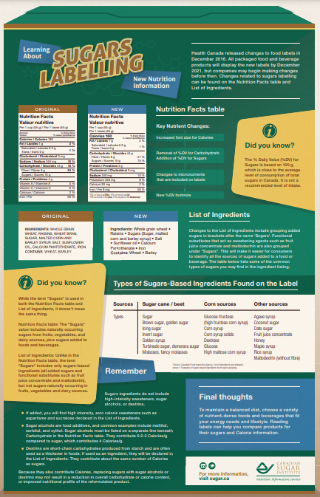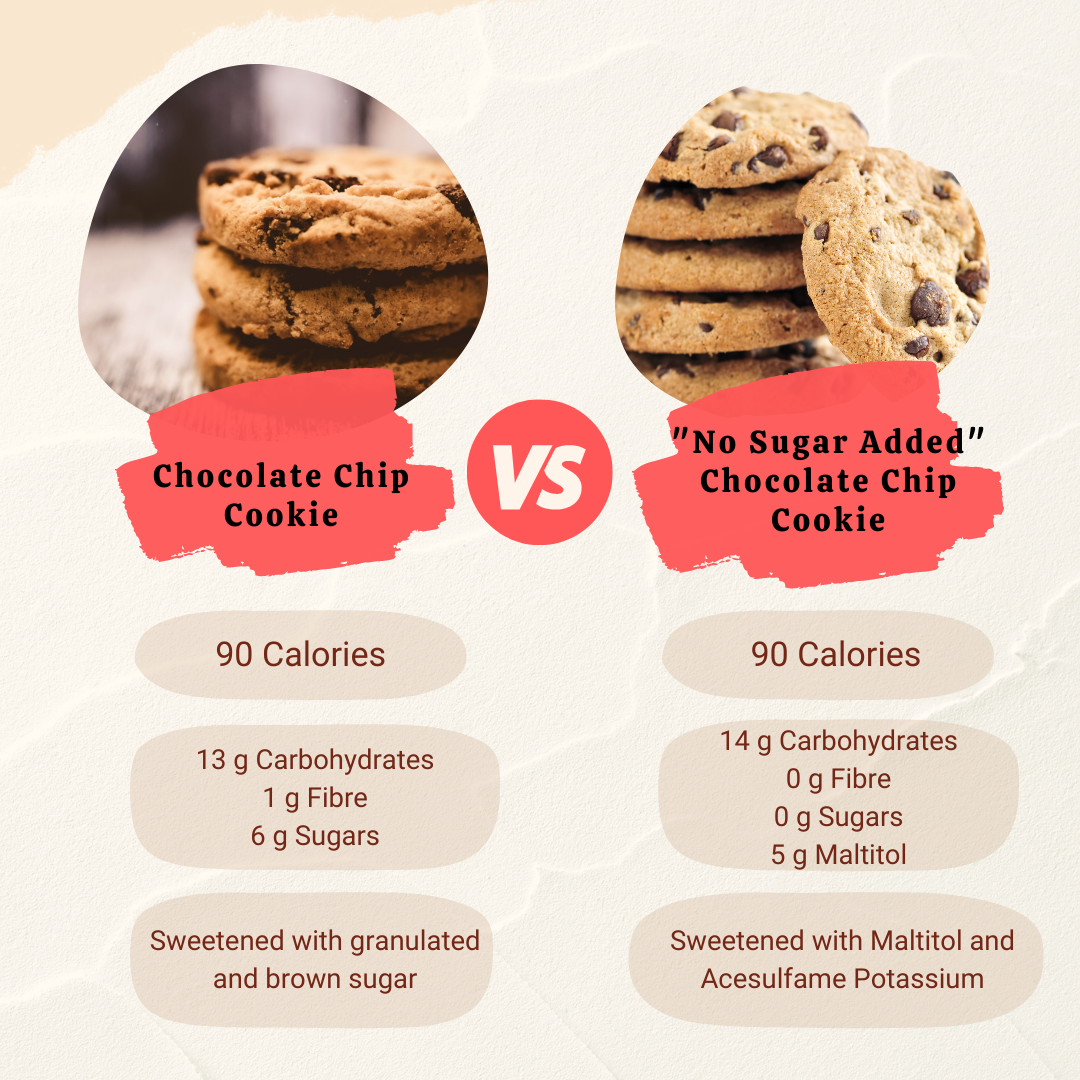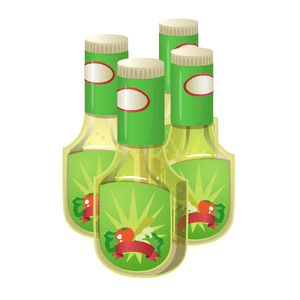Whats New
Reading Food Labels: New Information on Sugars
 Health Canada has made several changes to the Nutrition Facts table and the List of Ingredients, which you may now be seeing on packaged food labels. Health Canada released final regulations for food labels in December 2016 and a five-year transition period ending in December 2021 was provided for food and beverage companies to make these updates. Due to COVID-19, the federal government has extended the time for verifying compliance, but all companies must be in full compliance no later than December 2023.
Health Canada has made several changes to the Nutrition Facts table and the List of Ingredients, which you may now be seeing on packaged food labels. Health Canada released final regulations for food labels in December 2016 and a five-year transition period ending in December 2021 was provided for food and beverage companies to make these updates. Due to COVID-19, the federal government has extended the time for verifying compliance, but all companies must be in full compliance no later than December 2023.
Labelling changes include updates to the way sugars information is communicated in the Nutrition Facts table and List of Ingredients.
Our infographic “Learning about Sugars Labelling” details these important updates and is available for download.
Sugars Information in the List of Ingredients:
Sugars-based ingredients are now grouped in brackets in descending order by weight after the name 'Sugars' to help consumers:
- identify all sources of sugars added to a food, and
- understand how much sugars there are compared to other ingredients
There are many different types of sugars-based ingredients that you may see grouped after the term “sugars” on the ingredient list:
| Types of Sugars-Based Ingredients Found on the Food Label | |||
|---|---|---|---|
| Sources | Sugar cane/beet sources | Corn sources | Other sources |
| Types |
Sugar |
Glucose-fructose |
Agave syrup |
Below are just a few examples of how the grouping of sugars may give consumers better information about the sugars-based ingredients, by weight, in food products.
| Food Product Example and Ingredient List | Comments |
|---|---|
|
Ingredients: Whole grains wheat • Raisins • Sugars (Sugar, malted corn and barley syrup) • Salt • Sunflower oil • Calcium pantothenate • Iron |
|
|
Ingredients: Water • Sugars (concentrated white grape juice, strawberry puree, concentrated raspberry juice, concentrated blackberry juice) • White wine vinegar • Canola oil • Dijon mustard (water, mustard seeds, vinegar, salt, turmeric) • Salt • Concentrated lemon juice • Poppy seeds • Spices • Xanthan gum |
|
|
Ingredients: Sugars (maltodextrin) • Spices • Salt • Corn starch • Natural flavour |
|
Are products “reduced in sugars” or “no sugar added” a better choice?
Because sugar plays a variety of roles in food products - from sweetness to adding bulk, colour, and texture - other ingredients are often used to replace these functions.
This example compares a regular pre-packaged chocolate chip cookie to a “no sugar added” version:

• Calories per cookie are exactly the same.
• Carbohydrates are actually higher in the “no sugar added” cookie.
• Sugar was replaced with maltitol, a sugar alcohol, and acesulfame potassium, a non-caloric artificial sweetener.
• The ingredient list will identify the changes in composition of the product and the Nutrition Facts table is important to compare these products for carbohydrate and calorie information.
For more information:
- CSI Webpage - Nutrition Labelling and Claims
- CSI Infographic - Learning About Sugars Labelling: New Nutrition Information
- CSI Educational Resource – The Sweet Spot Challenge: A Compilation of Daily Menus Based on the 100 gram Daily Value for Sugars
- Health Canada: Food Labelling Changes
- Health Canada Nutrition Labelling Online Course
For a full list of examples of sugars-based ingredients that require grouping, see:



.png) Bran cereal with raisins
Bran cereal with raisins Fruit-berry salad dressing
Fruit-berry salad dressing  Seasoning mix
Seasoning mix